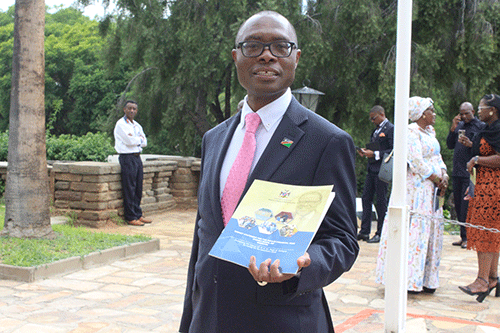Minister of Finance and Public Enterprises, Iipumbu Shiimi, has announced that Namibia’s sovereign credit rating has been retained at B1 and its outlook upgraded to positive from stable by Moody’s Investor Services.
In his ministerial statement presented in Parliament on Tuesday, Shiimi said Moody’s recent assessment and review of Namibia’s sovereign credit rating retained the country’s B1 credit rating while upgrading the outlook from stable to positive.
“The positive outlook reflects Namibia’s improved growth prospects supported not only by cyclical factors like higher commodity prices in a post-pandemic environment and renewed investments in the traditional mining industries, but also by the prospect of significant new hydrocarbon and renewable energy resource developments,” he said. Shiimi explained that Namibia has subscribed to two credit rating agencies (Moody’s Investors Service and Fitch Ratings) to provide assurance and measure the government’s ability to honour its debt obligations.
Shiimi noted that Namibia signed up with Moody’s Investors Service in 2011 and was assigned an investment grade credit rating of Baa3 with a stable outlook in September 2011, prior to the launch of Namibia’s first Euro Bond in October 2011.
“The investment grade rating reflected the government’s track record of responsible financial management and maintenance of low public debt, as well as an investor-friendly policy framework, reinforced by political and economic stability and steady economic growth prospects,” he added.
The minister added that as a small, open economy that is highly dependent on the exportation of minerals, the highly volatile commodity prices are generally considered a risk to Namibia’s revenue performance.
He said after the 2016/2017 economic recession and the bust in the commodity price cycles that weakened Namibia’s economy, the government debt, both domestic and foreign, started rising, which led to the high cost of debt servicing. Shiimi explained that these developments affected the trust and credibility of fiscal policy stance as public debt levels were deemed unsustainable, leading to the adjustment in the outlook to negative and eventually the first downgrade of Namibia’s credit rating in August 2017 from Baa3 to Ba1. He added that in the subsequent years until 2022, Namibia’s credit rating came under pressure and continued on a downward path until April 2022 when the sovereign credit rating was downgraded to B1.
The downgrade reflected the economy’s reduced shock absorption capacity and the continued increase in the debt to GDP ratio at the time induced by the Covid-19 effects.
– Nampa


